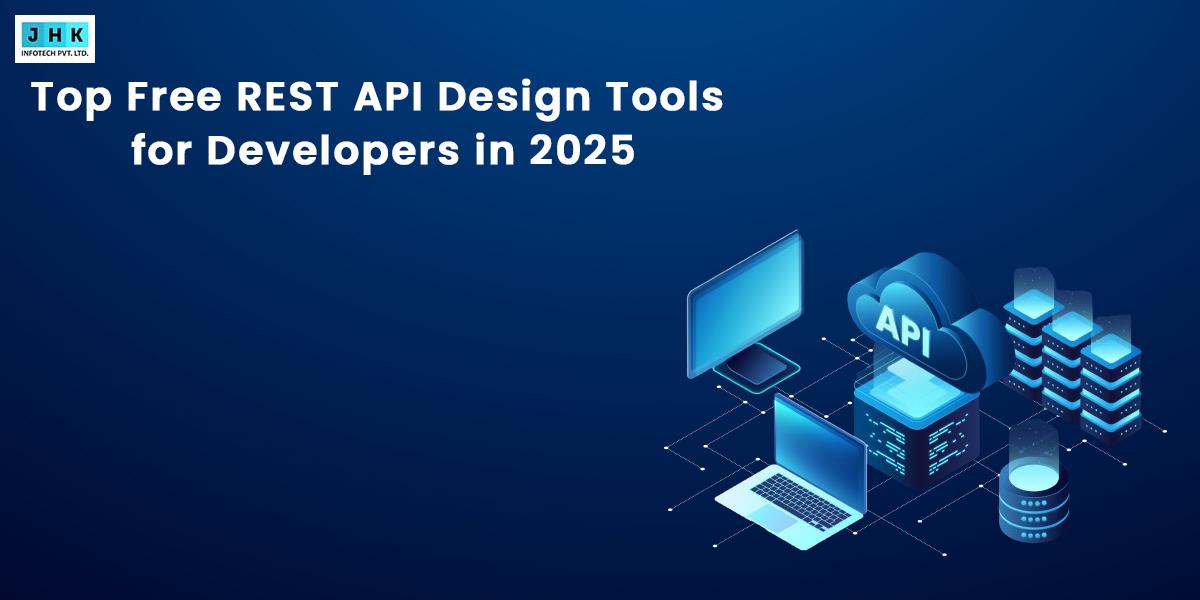Best Mobile App Development Framework in 2025

The Growing Importance of Mobile App Development in 2025
The mobile app development landscape has undergone a dramatic transformation in recent years. With mobile devices becoming the primary means of accessing the internet, the demand for high-performing, user-friendly apps is at an all-time high. In 2025, businesses across industries are increasingly reliant on robust mobile applications to enhance customer engagement, streamline operations, and stay competitive. As mobile technology evolves, the need for advanced frameworks that support rapid app development and deployment has never been more crucial. This article explores the most effective mobile app development frameworks available in 2025, providing insights into the factors that make them invaluable tools for developers and businesses alike.
How Frameworks Drive Innovation in the Mobile App Ecosystem
Frameworks have revolutionized the way developers approach mobile app development. They serve as a foundation upon which applications can be built more efficiently and with greater functionality. By providing pre-written code libraries, templates, and components, frameworks help to reduce the development cycle, enabling teams to focus on the unique aspects of their app. Moreover, frameworks drive innovation by allowing developers to leverage cutting-edge technologies like artificial intelligence (AI), machine learning (ML), augmented reality (AR), and Internet of Things (IoT) integration. As a result, frameworks empower developers to build applications that push the boundaries of what’s possible, delivering innovative experiences to users.
Purpose of This Guide: Exploring the Best Frameworks
This guide aims to provide an in-depth exploration of the top mobile app development frameworks in 2025. It delves into the strengths, weaknesses, and ideal use cases for each framework, helping developers and businesses make informed decisions about which framework aligns best with their goals. Whether you’re building a cross-platform app, a high-performance mobile game, or an enterprise-level solution, this guide will equip you with the knowledge necessary to choose the most suitable framework for your project.
Understanding Mobile App Development Frameworks
What Are Mobile App Development Frameworks?
At their core, mobile app development frameworks are software platforms that provide a structured environment for building mobile applications. These frameworks offer tools, libraries, and pre-built components that simplify the development process, allowing developers to create mobile apps more efficiently and with fewer errors. Whether native or hybrid, these frameworks play an integral role in the app development lifecycle, from initial concept through to deployment.
How Frameworks Simplify the Development Process
Mobile app development frameworks eliminate the need for developers to start coding from scratch, providing reusable components that accelerate the build process. By offering a collection of pre-configured functions and templates, frameworks reduce the complexity of app development. Additionally, frameworks often come with built-in tools for debugging, testing, and performance optimization, helping developers identify and resolve issues early in the development cycle. This simplification results in faster time-to-market, lower development costs, and more consistent app performance.
The Role of Frameworks in Cross-Platform and Native Development
In mobile app development, frameworks can be broadly classified into two categories: native and cross-platform. Native frameworks are designed to build apps specifically for a single platform (iOS or Android), using the platform’s native programming language (Swift for iOS, Java for Android). In contrast, cross-platform frameworks allow developers to write code once and deploy it across multiple platforms, saving time and resources. Frameworks like Flutter and React Native have gained popularity by making it easier to create cross-platform applications without compromising on performance or functionality.
Trends Shaping Mobile App Development in 2025
Emphasis on Cross-Platform Compatibility
As businesses seek to expand their reach, the demand for cross-platform apps is soaring. Cross-platform development frameworks enable developers to write a single codebase that works seamlessly on both iOS and Android devices. This eliminates the need for separate development teams for each platform, streamlining the development process and reducing costs. In 2025, frameworks that prioritize cross-platform compatibility are leading the charge, enabling companies to deliver their apps to a broader audience while maintaining a high-quality user experience.
Integration of AI, ML, and IoT into Frameworks
Artificial intelligence (AI), machine learning (ML), and the Internet of Things (IoT) are no longer futuristic technologies—they’re becoming integral components of mobile apps. Developers now expect frameworks to provide easy integration with AI and ML tools, allowing them to build apps that can learn from user behavior, make predictions, and offer personalized experiences. IoT integration is also becoming increasingly important as more devices and sensors are connected to mobile apps. In 2025, mobile app development frameworks will need to support these advanced technologies, helping developers create smarter, more efficient apps.
Growing Demand for AR/VR-Enabled Frameworks
Augmented reality (AR) and virtual reality (VR) technologies are reshaping the mobile app landscape. In industries like gaming, healthcare, retail, and education, AR and VR apps are gaining traction for their ability to deliver immersive experiences. As demand for these technologies increases, frameworks will continue to evolve to better support AR and VR features. Mobile app developers will need frameworks that enable them to easily implement AR/VR functionalities, such as object recognition, 3D modeling, and immersive environments, all while maintaining app performance.
Enhancing User Experience Through Lightweight Frameworks
In an era where user experience (UX) is paramount, lightweight frameworks that offer fast load times, smooth performance, and minimal resource consumption are in high demand. Mobile apps must run efficiently on a variety of devices, from high-end smartphones to budget models, without compromising user experience. As such, developers are increasingly turning to frameworks that prioritize speed and minimalism, ensuring their apps deliver a seamless UX.
Criteria for Evaluating Mobile App Development Frameworks
Scalability and Performance Metrics
When choosing a framework, scalability and performance are two of the most critical factors to consider. A framework must be able to handle an increasing volume of users, data, and transactions without compromising the app’s performance. Frameworks with high scalability allow businesses to expand their app’s capabilities as their user base grows, while those with optimal performance ensure fast load times, smooth animations, and overall responsiveness.
Developer-Friendly Features and Learning Curve
A framework’s ease of use is essential for reducing development time and costs. Frameworks that are intuitive, well-documented, and supported by an active developer community enable faster onboarding and less troubleshooting. Additionally, the learning curve for a framework should be minimal, allowing developers to build apps efficiently without spending excessive time on mastering complex syntax or concepts.
Security Features for Robust App Development
Security remains a top priority in mobile app development, as apps handle sensitive data and interact with other platforms. Frameworks must offer strong encryption, data protection, and secure authentication features to protect user privacy and prevent security breaches. Frameworks that provide these built-in security features can help developers avoid costly vulnerabilities and deliver apps that users can trust.
Cost-Effectiveness and Licensing Models
The cost of using a framework can vary significantly, depending on whether it is open-source or licensed under a paid model. Open-source frameworks are free to use but may require additional resources for maintenance and troubleshooting. On the other hand, proprietary frameworks often come with support and regular updates but may involve licensing fees. When evaluating frameworks, developers must consider the long-term costs associated with each option, ensuring they remain within budget while still meeting the app’s requirements.
Best Mobile App Development Framework
Overview of the Most Popular Frameworks This Year
Several frameworks have earned their place as top choices for mobile app development in 2025. These frameworks are chosen for their unique features, scalability, and ability to integrate advanced technologies such as AI, ML, and AR. Developers are selecting frameworks that align with their app goals, such as cross-platform compatibility or high performance. The most popular frameworks this year include Flutter, React Native, Xamarin, and Ionic.
Key Features That Make These Frameworks Stand Out
Each of the top frameworks offers a combination of unique features that make them ideal for specific app development needs. Flutter’s emphasis on a single codebase for both iOS and Android, React Native’s seamless integration with native components, Xamarin’s enterprise-level scalability, and Ionic’s hybrid approach to web and mobile development all stand out as defining characteristics that appeal to developers and businesses.
Flutter
Why Flutter Continues to Dominate in 2025
Flutter has emerged as one of the leading frameworks for cross-platform app development, thanks to its ability to deliver high-performance, visually appealing apps. In 2025, Flutter’s rich feature set, active community, and growing adoption by major companies make it a top choice for developers looking to build apps for both iOS and Android. Its ability to compile to native code, fast development cycle, and flexibility in designing custom UIs contribute to its ongoing popularity.
Unique Features of Flutter for Scalable Apps
Flutter’s most unique feature is its “hot reload” capability, which allows developers to instantly see changes in the app during development. This significantly speeds up the development process and fosters a more interactive workflow. Additionally, Flutter’s widget-based architecture enables easy scalability, making it suitable for building large, complex applications that require smooth user interactions and high-performance processing.
Advantages for Developers and Businesses
For developers, Flutter provides a rich set of pre-built widgets and an easy-to-understand programming model. The framework allows them to quickly deliver apps with native-like performance and stunning designs. For businesses, Flutter offers the benefit of a single codebase that can be deployed across multiple platforms, resulting in faster time-to-market and reduced development costs.
React Native
How React Native Meets Diverse Development Needs
React Native has become a favored choice among developers due to its balance of performance and flexibility. The framework allows developers to write in JavaScript and reuse much of the code across platforms. Its compatibility with native code ensures that apps built with React Native can achieve performance levels close to that of fully native apps, while still offering the flexibility of a cross-platform framework.
Core Features That Developers Appreciate in 2025
React Native’s modular architecture, fast refresh capability, and wide range of libraries make it easy for developers to customize their apps and integrate third-party services. Its large developer community and wealth of resources make it a go-to choice for many mobile app projects.
Industry Use Cases for React Native Apps
React Native is particularly popular in industries like social media, ecommerce, and ride-sharing, where cross-platform compatibility and performance are crucial. Companies like Facebook, Instagram, and Airbnb have successfully used React Native to deliver seamless experiences across iOS and Android platforms.
Ionic
How Ionic Combines Web Technologies with Mobile Development
Ionic is a hybrid app development framework that leverages web technologies like HTML, CSS, and JavaScript to build mobile apps. By wrapping web apps in a native shell, Ionic enables developers to create apps that run on both iOS and Android devices while maintaining a consistent look and feel across platforms.
Benefits of Ionic for Small and Medium Businesses
Ionic’s hybrid approach is especially valuable for small and medium businesses that want to launch mobile apps without investing heavily in platform-specific development. Ionic allows businesses to create functional, cost-effective apps quickly and with minimal resources.
Key Limitations to Be Aware Of
While Ionic offers many benefits, it is not without limitations. Hybrid apps can sometimes experience performance issues compared to native apps, particularly in complex or graphics-intensive applications. Developers need to carefully evaluate whether Ionic’s approach is appropriate for their app’s specific needs.
Xamarin
Why Enterprises Rely on Xamarin for Complex Apps
Xamarin is an enterprise-grade framework designed for building high-performance apps with complex functionality. Enterprises prefer Xamarin because it allows them to build robust, scalable apps using C# and .NET, which are familiar tools for many enterprise developers. Xamarin provides access to native APIs, ensuring that apps maintain a native look and feel, while also offering cross-platform capabilities.
New Features of Xamarin in 2025
Xamarin continues to evolve in 2025 with new features aimed at improving performance, accessibility, and integration with cloud services. The latest version of Xamarin offers enhanced support for UI automation, better performance on mobile devices, and improved compatibility with modern libraries and APIs.
Common Challenges When Using Xamarin
Despite its many benefits, Xamarin can present challenges, particularly for smaller teams or those new to .NET development. The complexity of managing multiple app versions, combined with the framework’s learning curve, can pose difficulties for developers without extensive experience in C#.
Exploring Specialized Frameworks
Best Frameworks for Gaming and High-Performance Apps
Certain frameworks, such as Unity and Cocos2d, are tailored specifically for gaming apps and other high-performance applications. These frameworks offer robust graphics engines and optimized performance for complex visuals and real-time processing.
Frameworks Tailored for Ecommerce and Retail Apps
For ecommerce and retail apps, frameworks like Magento and Shopify offer specialized tools and integrations for building scalable, feature-rich platforms. These frameworks come with built-in support for payment gateways, inventory management, and other ecommerce essentials.
Frameworks with Built-In AI and Machine Learning Capabilities
Frameworks like TensorFlow Lite and PyTorch Mobile are specifically designed to integrate AI and ML functionalities directly into mobile apps. These frameworks provide the tools necessary for building intelligent applications that can learn, predict, and adapt to user behavior.
Future of Mobile App Development Frameworks
Innovations on the Horizon: What to Expect in 2026 and Beyond
Looking ahead, mobile app development frameworks will continue to evolve, with a focus on further enhancing app performance, streamlining development workflows, and integrating emerging technologies such as 5G and blockchain. Developers can expect more frameworks with built-in support for AI, AR, VR, and advanced security features.
The Increasing Role of Open-Source Frameworks
Open-source frameworks are playing an increasingly important role in mobile app development. As these frameworks gain traction, they offer developers more flexibility and cost-effective solutions for building custom apps. The open-source community also fosters greater collaboration and rapid innovation in the mobile app space.
Predictions for Framework Evolution and Industry Trends
As we move into the future, mobile app development frameworks will become even more modular and adaptable, allowing developers to select only the tools they need for their specific project. Additionally, we can expect frameworks to continue becoming more intuitive, with less emphasis on complex coding and more focus on automating mundane tasks.
Final Thought
Summary of the Best Frameworks for 2025
In 2025, the top mobile app development frameworks—Flutter, React Native, Xamarin, and Ionic—offer unique strengths for developers depending on their project’s needs. These frameworks empower developers to build high-performance, scalable, and user-friendly apps efficiently, making them invaluable in today’s fast-paced app development environment.
Selecting the Ideal Framework for Your Project
Choosing the right framework depends on your project’s specific goals, budget, and technical requirements. Factors such as cross-platform compatibility, ease of use, performance, and support for advanced technologies should guide your decision-making process.
Encouraging Developers to Stay Ahead in the Tech Landscape
As mobile app development continues to evolve, staying informed about the latest frameworks and technologies will be crucial for developers. By selecting the right tools and continuously adapting to industry trends, developers can remain competitive in the ever-changing mobile app ecosystem.









